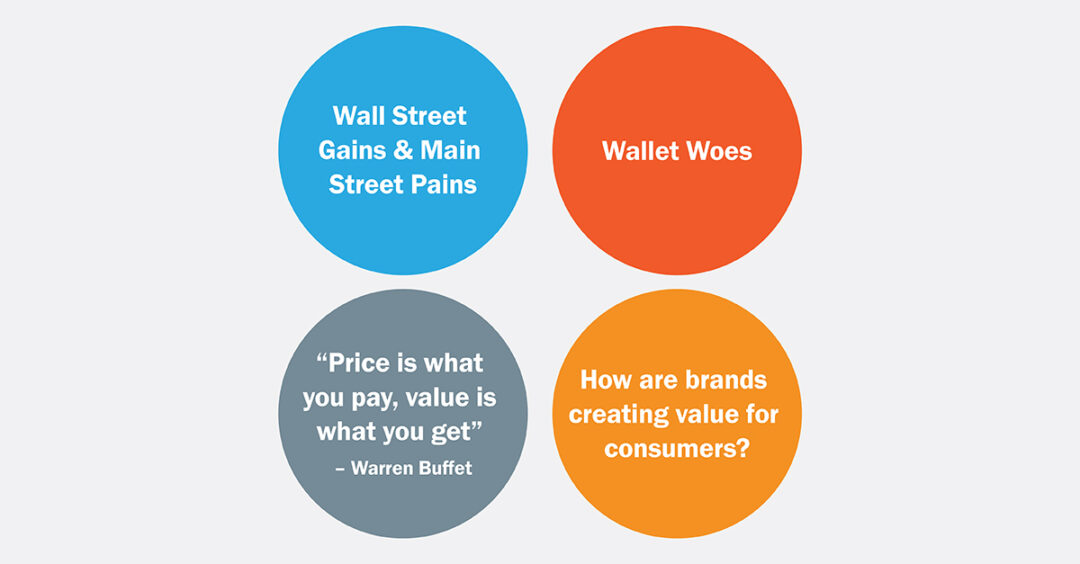Challenger Brand Study 2015
The Decade of the Challenger Brand
It is widely known that smaller, emerging consumer packaged goods (“CPG”) brands are winning the battle for consumers’ hearts, minds and wallets from larger, established CPG manufacturers. Roughly $15B in revenue1 has shifted from large to small brands to date this decade (or nearly 2.5 points of market share). Increasingly, these smaller brands are challenging convention and better responding to consumers’ needs through innovations in positioning, product, packaging, distribution, and communication—ushering in the decade of the Challenger Brand.
In order for old and new firms alike to innovate and unlock incremental growth in today’s marketplace, they will need to build brands, structure their organizations, and go to market in a whole new way. They will need to reflect the successful practices of a Challenger Brand. The purpose of this next installment of our Challenger Brand series is twofold:
1. To identify the leading Challenger brands to watch in 2015
2. To synthesize the best practices that allow these top performers to break through and position themselves for mainstream success.
Why are Challenger Brands Winning?
Simply put, Big CPG has been over-reliant on brand proliferation and is struggling to create organic growth. Strategic focus on line extensions, pack size changes, in-and-outs, and incremental flavor innovation continues without success for two reasons.
Firstly, Big CPG’s limited consumer scope prevents radical innovation, as these firms talk to the same category consumers over and over. Secondly, these firms’ organizational inflexibility stymies attempts to innovate, as they are locked into existing manufacturing processes and large systems investments and have to chase quarterly financial expectations.
Against the void of innovation from large firms, Challenger Brands are assuming the mantle of bringing true category innovation to market.
Successful Challenger Brands — those that disrupt established category dynamics and stimulate long-term growth — are able to either re-segment an existing category, as with Pretzel Chips within salty snacks, or develop new consumption occasions, such as with Plum Organics’ launch of baby food pouches.
Seurat Group’s 2015 Challenger Brands
While this dynamic exists across all of the key sectors within CPG — food and beverage, household products, beauty and personal care, pet care, and over-the-counter (“OTC”) medication/supplements — we focused our research on the most promising brands in the largest and most active CPG sector — food & beverage.
As innovation in food & beverage has risen more rapidly than in other sectors, we believe these learnings apply broadly against industries that have yet to see increased Challenger activity.
Our process included three steps to understand Challenger brands from the perspective of the manufacturer, the consumer, and the shopper/retailer:

We conducted in-depth research to understand each brand’s point of difference, its competitive advantages and disadvantages, and its brand story.

The result was a consumer score for each brand that broadly indicated consumers’ perception of each brand.

Our goal was to determine each brand’s at-shelf appeal to shoppers, in-aisle competitive set, and barriers to purchase.
Through this work, the following ten brands rose to the top as the most promising Challenger brands of 2015, poised for mainstream success in food & beverage.
Our ten brands span across different departments, temperature states, and brand life stages. Collectively, they exemplify the best practices for Challenger Brands today.
Exploring the 5 Best Practices of Our 2015 Challenger Brands
We investigated the strategies these brands have used to drive their success, with the goal of offering both suggestions for how to spur revenue growth by competing like Challengers as well as recommendations
around how today’s retailers can identify tomorrow’s brands to watch. The following are the five best practice principles that these brands exemplify.

Product and packaging innovation are avenues through which today’s challenger brands have created portable, single-serve snacks from former bulk or additive categories.
Chia seeds, for example, were previously a supplemental ingredient added to foods like smoothies, salads, and cereal.
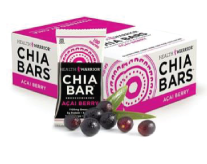
Heath Warrior was the first player to convert the superfood into bar form, tapping into the exploding interest in the ingredient (Chia seed growth was tracked at 239% growth at the end of 20122), thus creating added value in the form of convenience.“ Health Warrior has made chia seeds more accessible for portable consumption.
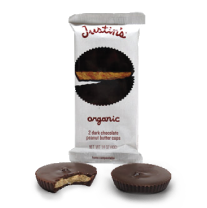
Justin’s Nut Butters took a similar path, but focused on packaging innovation. The nut butter category has been on-trend for several years, as evident from the 34% growth it experienced between 2008 and 2013, yet line extensions have driven a large portion of innovation (37%).
Justin’s created a differentiated offer—nut butters for on-the-go—through single-serve squeezable packs. The resulting brand equity has allowed Justin’s to branch into new categories such as confections, with the introduction of Justin’s chocolate peanut butter cups. Justin’s features squeezer packs of nut butters for on-the-go protein fixes.
Health Warrior and Justin’s, among other brands, are giving larger players a run for their money by expanding consumption occasions through meeting consumers’ needs for superfoods that are more accessible and portable.

The rise of organic exemplifies consumers’ growing interest in consuming the good while avoiding the bad — GMO’s, additives, corn syrup, hormones, and chemicals.
Today’s most promising brands are able to keep up with consumers’ changing demands through manufacturing innovations and nimble supply chains.
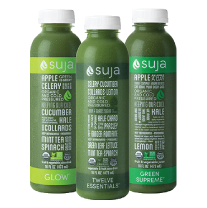
Suja Juice, for example, developed high pressure processing, an alternative to high heat processing, to manufacture a range of juices with the good — a higher yield of vitamins, minerals, and enzymes and longer shelf lives — without the bad — the harmful bacteria sometimes found in unpasteurized juice. Suja Juice’s high pressure processing extends shelf life without sacrificing nutrients.
 “Suja is making it happen with the advocacy marketing model and without the corporate oversight that doesn’t ‘get it’. They are concretely in the throes of the ‘Smart Mainstreaming’ conundrum. Co-founder and CEO Jeff Church gets it.” – Industry Expert
“Suja is making it happen with the advocacy marketing model and without the corporate oversight that doesn’t ‘get it’. They are concretely in the throes of the ‘Smart Mainstreaming’ conundrum. Co-founder and CEO Jeff Church gets it.” – Industry Expert
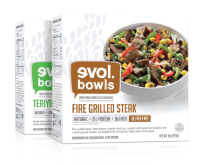
Evol stands out as another brand that is able to offer consumers the good without the bad using a well-organized supply chain and sourcing transparency.
Despite the fact that frozen meals are “historically an extremely difficult category to succeed in with the powerhouse manufacturers and competitive pricing, we see traditional players like Stouffer’s, Lean Cuisine, and Banquet declining as newer, differentiated players steal share.”
Evol has modernized frozen meals by creating a “real food” offer: free-range or ranch-raised meat and non-GMO grains, vegetables, and oils. Both Suja and Evol have developed processes — manufacturing, supply chain, and marketing — to guarantee their products can keep up with ingredients consumers are demanding or avoiding, and ensure they are made aware of the unique offers. Evol has brought nutrition back to the frozen meals category.

Brand advocates have proven to be an effective strategy for driving product sampling, brand awareness, and adoption of the lifestyle surrounding a brand.
Today’s Challengers, however, are going one step further to highlight advocates who can best inspire or educate consumers, such as health professionals, store associate “experts” or professional athletes.

Vega has developed a team of ambassadors that includes Olympic medalists, a professional MMA Fighter, an Olympic water polo player, professional cyclists, MLB layers, and nationally-recognized nutritionists and yogis—not to mention in-store advocates that influence that critical last three feet to purchase. Vega enlists professional athletes as brand ambassadors.
 “When we look at growth strategy, it comes down to finding the best way to inspire, educate and engage people who see clean nutrition as a support for healthy living.” – Cristina Pagnucco, Social Media and Online PR, Vega6
“When we look at growth strategy, it comes down to finding the best way to inspire, educate and engage people who see clean nutrition as a support for healthy living.” – Cristina Pagnucco, Social Media and Online PR, Vega6

Health Warrior employs a similar approach to brand advocacy. Consumers are urged to join their ”tribe” of professional athletes: ultra-marathoners, NFL players, personal trainers, and product users who have prioritized diet and exercise in their lives. Anyone can enter to join the tribe by describing their personal Warrior Way, and few lucky winners are featured on the brand’s website.
Vega and Health Warrior are among many brands that have focused on improved functional performance as a key benefit of their products. In 2014, product launches targeting endurance athletes within the sports nutrition market increased 64%.7 Nevertheless, these brands have distinguished themselves from the numerous brands catering to athletes by using brand ambassadors to inspire and educate consumers around this high performance lifestyle.

Consumers’ increasing interest in protein has set in motion to a wave of product launches focused on protein content.
In fact, 6% of US food and beverage launches from 2013 to 2014 were marketed as “high-protein” or “a source of protein.” Today’s Challenger brands are using two product innovation strategies to set themselves apart from others:
1. purer protein, without toxins or additives OR
2. more protein versus the traditional category.
 “Protein is hot, hot, hot. Brands like Builders (from CLIF), Pure Protein, and ProMax were killing it for a while, but their growth has slowed as consumers are looking for cleaner protein sources.” – Industry Expert
“Protein is hot, hot, hot. Brands like Builders (from CLIF), Pure Protein, and ProMax were killing it for a while, but their growth has slowed as consumers are looking for cleaner protein sources.” – Industry Expert
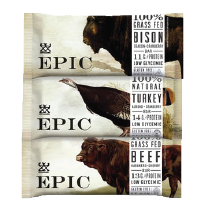
EPIC has created bars made of entirely lean animal protein, creating a new avenue to protein and a truly unique segment within a category largely focused on sweet bars.
These 100% grass-fed, paleo-friendly, gluten-free, low-sugar bars satisfy consumers’ desire for simple protein.
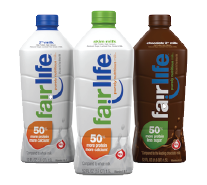
Fairlife Milk, similarly, has developed an ultra-filtered variety to offer consumers a product with 50% more protein and 30% more calcium, cutting directly to the nutritional benefits in demand. Fairlife Milk offers milk concerns a fortified, premium milk product.
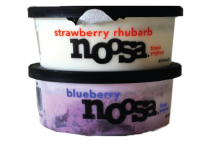
Finally, Noosa Yoghurt has introduced an Australian yogurt to a category dominated by Greek, offering the same pure protein punch, but with a different take on texture and flavor.
These three brands offer products with a higher concentration of protein per serving but with few unnecessary extras, appealing to the demand for a simple, potent protein source.

Presence at retail is crucial to driving brand awareness and conversion. We like to say Challenger brands are made at retail, both brick & mortar, and online.
Today’s most promising up-and-comer brands have leveraged packaging innovation, strategic shelving, and stores-within-stores to ensure they stand out in both incubator and mainstream channels.
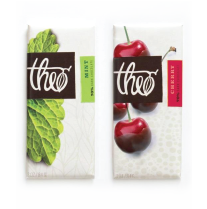
Theo Chocolate uses white packaging to differentiate its products within the busy chocolate set. The brand is usually shelved at eye-level, further increasing its ability to attract shoppers’ attention while they browse. Theo Chocolate’s white packaging stands out at shelf.
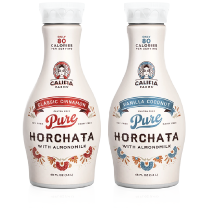
Similarly, Califia Farms, which uses uniquely shaped bottles, is more likely to disrupt shoppers as they approach the milk and dairy alternative set. Califia Farms’ pear-shaped bottles break up the shelf and draw the eye.
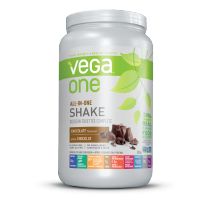
Vega has succeeded in standing out within the e-commerce world.
Beyond unique packaging, the brand has successfully developed a Vega Store within Amazon.com, setting themselves apart from other powdered nutrition brands sold on Amazon. Whether online or offline, consumers are more likely to notice and be drawn to more unique packages and displays. Vega’s clean, well-designed Amazon Store helped them build a thriving e-commerce business.
Conclusion
Innovation is essential to long-term success in CPG, no different from any industry. The most valuable companies are arguably the most successful innovators. Challenger Brands highlight new ways to unlock innovation in CPG, while still beginning with the consumer.
Today’s consumers, who are less influenced by traditional brand-building levers, are choosing brands that reflect their values. In turn, the Challenger Brands which we have discussed are thinking differently about their product, packaging, supply chain, and marketing to differentiate their products within a crowded CPG landscape. Despite the majority of the industry’s growth coming from Challenger Brands, many manufacturers are ill-equipped to take advantage of future growth opportunities because they are strategically, organizationally, and financially misaligned with “going small.”
Nevertheless, it is not only smaller, emerging players who can leverage this mindset. These strategies are valuable principles for any brand—small or large—pursuing success in today’s marketplace, as well as for any retailer who hopes to plan proactively for ongoing growth.







